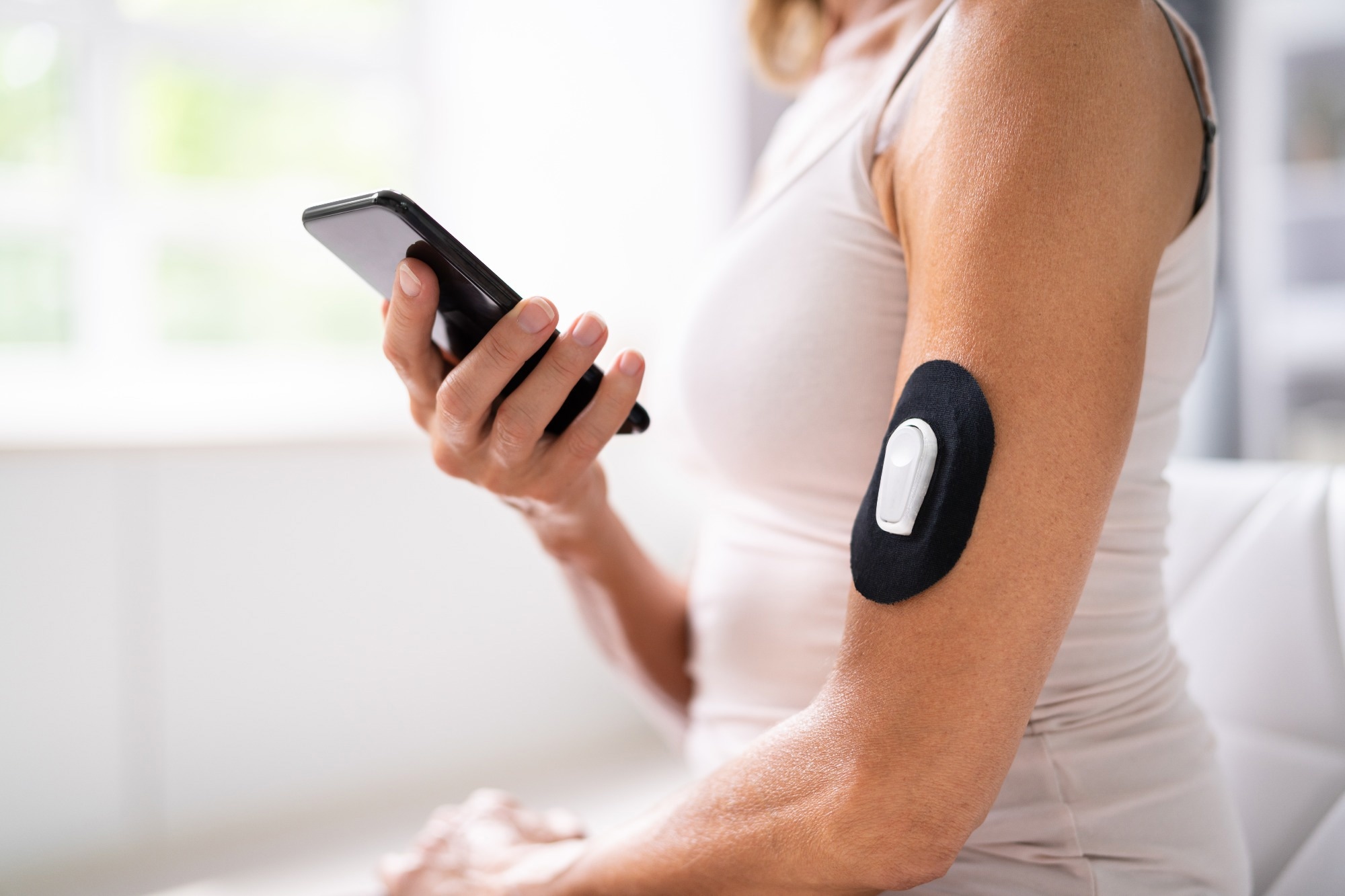Millions may be missing early diabetes risk. AI models show why your blood sugar spikes might matter more than your test results.
 Study: Multimodal AI correlates of glucose spikes in people with normal glucose regulation, pre-diabetes and type 2 diabetes. Image Credit: Andrey_Popov / Shutterstock
Study: Multimodal AI correlates of glucose spikes in people with normal glucose regulation, pre-diabetes and type 2 diabetes. Image Credit: Andrey_Popov / Shutterstock
In a recent article published in the journal Nature Medicine, researchers analyzed data from over 2,400 people across two cohorts to identify patterns in glucose spikes and develop personalized glycemic risk profiles.
They discovered significant differences in glucose spike patterns between people with type 2 diabetes (T2D) and those with prediabetes or normoglycemia. Their multimodal risk model could help practitioners identify prediabetic individuals at higher risk of developing T2D.
Diabetes and prediabetes affect a large segment of the adult American population, yet standard diagnostic tools like glycated hemoglobin (HbA1c) and fasting glucose fail to reflect the full complexity of glucose regulation.
Many factors, including stress, microbiome composition, sleep, physical activity, genetics, diet, and age, can influence blood glucose fluctuations, particularly post-meal spikes (defined as a rise of at least 30 mg/dL within 90 minutes), which have been observed even in seemingly healthy individuals.
Previous studies have explored these variations using continuous glucose monitoring (CGM), but their scope was limited to prediabetic and normoglycemic individuals, often lacking representation from underrepresented groups in biomedical research.
To address this gap, the PROGRESS study conducted a nationwide, remote clinical trial involving 1,137 diverse participants (48.1% from groups historically underrepresented in biomedical research) ranging from normoglycemia to T2D. The researchers collected a wide range of self-reported and sensor-based data, including physiological, lifestyle, biological, demographic, and clinical information.
This multimodal approach allowed the development of a more nuanced understanding of glycemic control and individual variability in glucose spikes.
The study aimed to create comprehensive glycemic risk profiles that could improve early detection and intervention for prediabetic individuals at risk of progressing to diabetes, offering a personalized alternative to conventional diagnostic metrics like HbA1c.
Researchers used data from two cohorts: PROGRESS (a U.S.-based digital clinical trial) and HPP (an Israeli observational study). PROGRESS enrolled adults with and without T2D for 10 days of CGM, while collecting data on gut microbiome, genomics, heart rate, sleep, diet, and activity.
Participants also provided stool, blood, and saliva samples from home and shared their electronic health records. Exclusion criteria included conditions like recent antibiotic use, pregnancy, type 1 diabetes, and other health factors that might interfere with CGM or metabolism. Recruitment was entirely remote using social media and electronic health record invitations.
CGM data were processed into one-minute intervals, and glucose spikes were defined using specific thresholds. Six key glycemic metrics were calculated, including average glucose, time in hyperglycemia, and spike duration.
Lifestyle data were gathered using a food logging app and wearable trackers. Genomic and microbiome data were analyzed using standard tools, and composite metrics like polygenic risk scores and microbiome diversity were calculated.
A machine learning model was developed to assess T2D risk based on multimodal data (demographics, anthropometrics, CGM, food intake, and gut microbiome), and its performance was tested in both PROGRESS and HPP cohorts. Statistical analyses included analysis of covariance, Spearman correlations, and bootstrapping for significance testing and model evaluation.
From the 1,137 enrolled participants, 347 were included in the final analysis, of whom 174 were normoglycemic, 79 were prediabetic, and 94 had T2D.
Researchers observed significant differences in glucose spike metrics across diabetes states, such as nocturnal hypoglycemia, spike resolution time, mean glucose level, and time spent in hyperglycemia. These differences were most pronounced between T2D and the other groups, with prediabetic individuals showing metrics statistically closer to normoglycemia than to T2D for key measures like spike frequency and intensity.
Gut microbiome diversity was negatively correlated with most glucose spike metrics, suggesting a healthier microbiome profile is linked to better glucose control.
Higher resting heart rate, body mass index (BMI), and HbA1c were associated with poorer glycemic outcomes, while physical activity was linked to more favorable glucose patterns. Interestingly, higher carbohydrate intake was associated with quicker spike resolution but more frequent and intense spikes.
The team developed a binary classification model based on multimodal data that distinguished normoglycemic from T2D individuals with high accuracy. When applied to the external dataset (HPP), the model retained strong performance, and it successfully identified substantial variability in risk levels among prediabetic individuals with similar HbA1c values.
These findings suggest that multimodal glycemic profiling can enhance risk prediction and individual monitoring beyond standard diagnostic tools, especially for prediabetes.
The study highlights that traditional diabetes diagnostics, such as HbA1c, fail to capture individual variations in glucose metabolism.
By using CGM alongside multimodal data based on genomics, lifestyle, and microbiome, researchers identified significant differences in glucose spikes across normoglycemic, prediabetic, and T2D individuals, with prediabetes showing stronger similarity to normoglycemia than to T2D in several key metrics.
The developed machine learning-driven multimodal risk model, validated in an external cohort, revealed wide variability in risk among prediabetic individuals with identical HbA1c levels, supporting its added value over standard metrics.
Strengths include the decentralized, diverse PROGRESS cohort (with 48.1% representation from underrepresented groups) and real-world data collection. However, limitations involve potential biases from device variability, inaccuracies in ty, self-reported biases, food logging challenges, and use of antihyperglycemic medications.
Broader validation and longitudinal research are needed to confirm predictive utility and clinical relevance.
Ultimately, this study demonstrates the potential of remote, multimodal data to enhance early detection, prediabetes risk stratification, and personalized prevention of T2D, paving the way for more precise and inclusive diabetes care.
Journal reference:
- Multimodal AI correlates of glucose spikes in people with normal glucose regulation, pre-diabetes and type 2 diabetes. Carletti, M., Pandit, J., Gadeleta, M., Chiang, D., Delgado, F., Quartuccio, K., Fernandez, B., Garay, J.A.R., Torkamani, A., Miotto, R., Rossman, H., Berk, B., Baca-Motes, K., Kheterpal, V., Segal, E., Topol, E.J., Ramos, E., Quer, G. Nature Medicine (2025). DOI: 10.1038/s41591-025-03849-7, https://www.nature.com/articles/s41591-025-03849-7